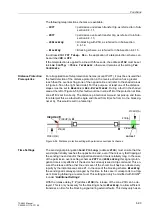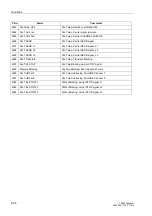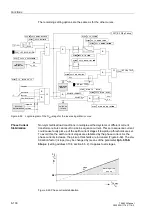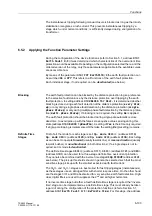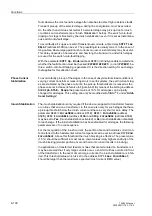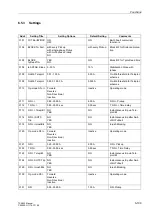
Functions
6-97
7SA522 Manual
C53000-G1176-C119-2
6.5
Earth Fault Protection in Earthed Systems
General
In earthed systems, where extremely large fault resistance may exist during earth
faults (e.g. overhead lines without earth wire, sandy soil, or high tower footing resist-
ance) the fault detection of the distance protection will often not pick up because the
resulting earth fault impedance could be outside the fault detection characteristic of
the distance protection.
The Distance Protection 7SA522 has protection functions for such high resistance
earth faults. These options are available:
•
Three overcurrent stages with definite time tripping characteristic (definite time),
•
one overcurrent time stage with inverse time characteristic (IDMT),
These four stages are independent on each other and are freely combinable. If the in-
verse time stage is not required, it may be employed as a fourth definite time stage.
Each stage may also be set to be non directional or directional — forward or reverse.
A signal transmission may be combined with these four stages. For each stage it may
be determined if it should coordinate with the signal transmission (refer also to Section
6.6). If the protection is applied in the proximity of transformers, an inrush stabilization
can be activated. Furthermore, blocking by external criteria is possible via binary in-
puts (e.g. for reverse interlocking or external automatic reclosure). During energization
of the protected feeder onto a short circuit, any stage — or several stages — may be
switched to undelayed tripping.
6.5.1
Method of Operation
Measured value
The earth current is the negative sum of the three phase currents, i.o.w.
I
E
= –3·
I
0
=
–(
I
L1
+
I
L2
+
I
L3
). Depending on the version ordered, and the configured application
for the fourth current input
I
4
of the device, the earth current can be measured or cal-
culated.
If the input
I
4
is connected in the starpoint of the set of current transformers or to a
separate earth current transformer, on the protected feeder, the earth current is direct-
ly available as a measured value.
If the device is fitted with the highly sensitive current input for
I
4
, this current
I
4
is used
with the compensation factor
(address
, refer to Sub-section 6.1.1).
As the linear range of this measuring input is severely limited (maximum 1.6 A), this
current is only evaluated up to an amplitude of approximately 1 A. In the case of larger
currents the device automatically switches over to the evaluation of the zero sequence
current derived from the phase currents. Naturally, all three phase currents from three
current transformers connected in a star arrangement must be available and connect-
ed. This allows the processing of the earth current both when very small and also larg-
er earth short-circuit currents occur.
If the fourth current input
I
4
is otherwise utilized, e.g. for a transformer starpoint current
or for the earth current of a parallel line, the device calculates the earth current from
the phase currents. Naturally, in this case also, all three phase currents from three cur-
rent transformers connected in a star arrangement must be available and connected.
Summary of Contents for siprotec 7SA522
Page 20: ...7SA522 Manual C53000 G1176 C119 2 ...
Page 64: ...7SA522 Manual C53000 G1176 C119 2 ...
Page 89: ...SIPROTEC 4 Devices 4 25 7SA522 Manual C53000 G1176 C119 2 Figure 4 20 CFC Logic example ...
Page 408: ...7SA522 Manual C53000 G1176 C119 2 ...
Page 456: ...7SA522 Manual C53000 G1176 C119 2 ...
Page 516: ...7SA522 Manual C53000 G1176 C119 2 ...
Page 620: ...Appendix B 48 ...











